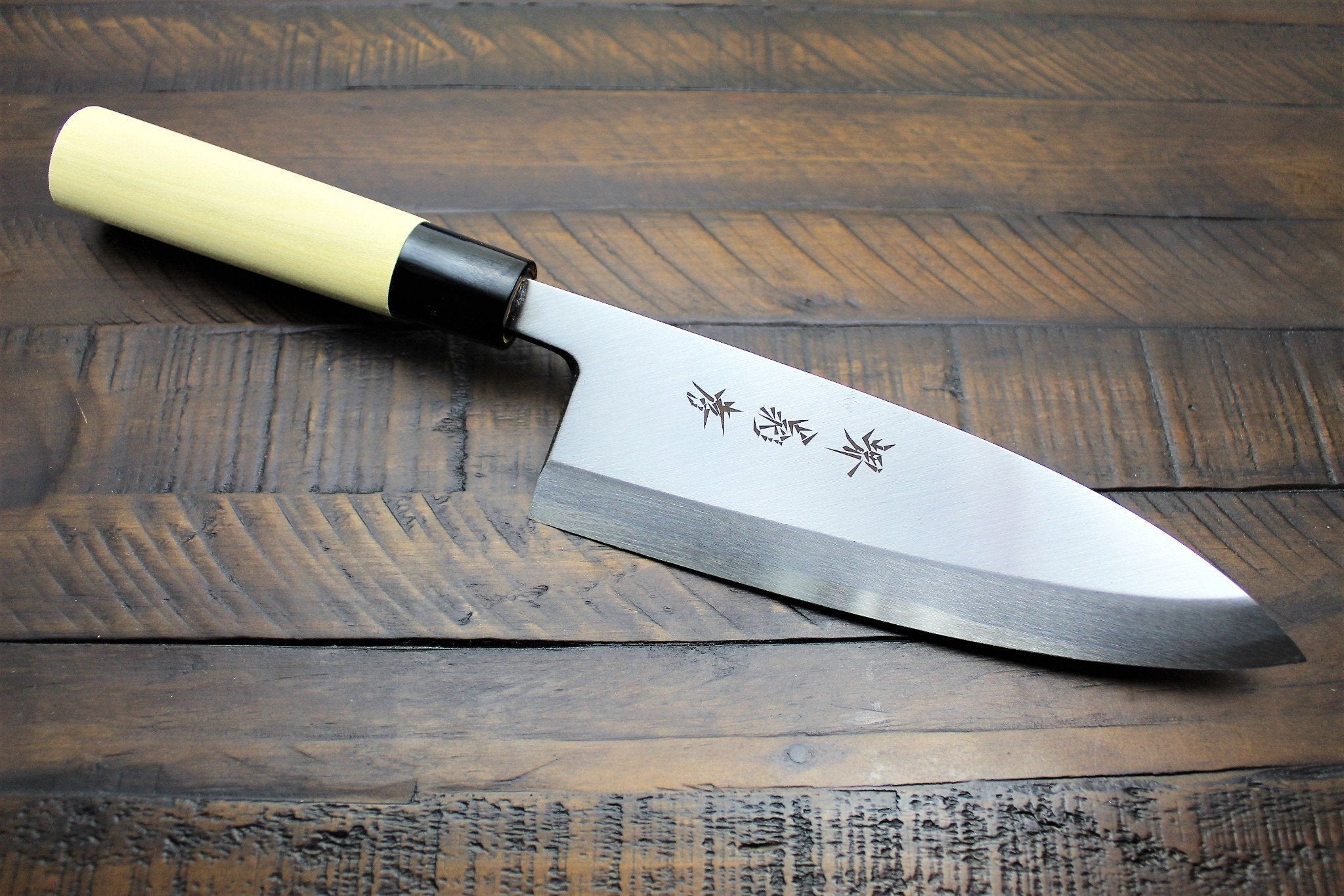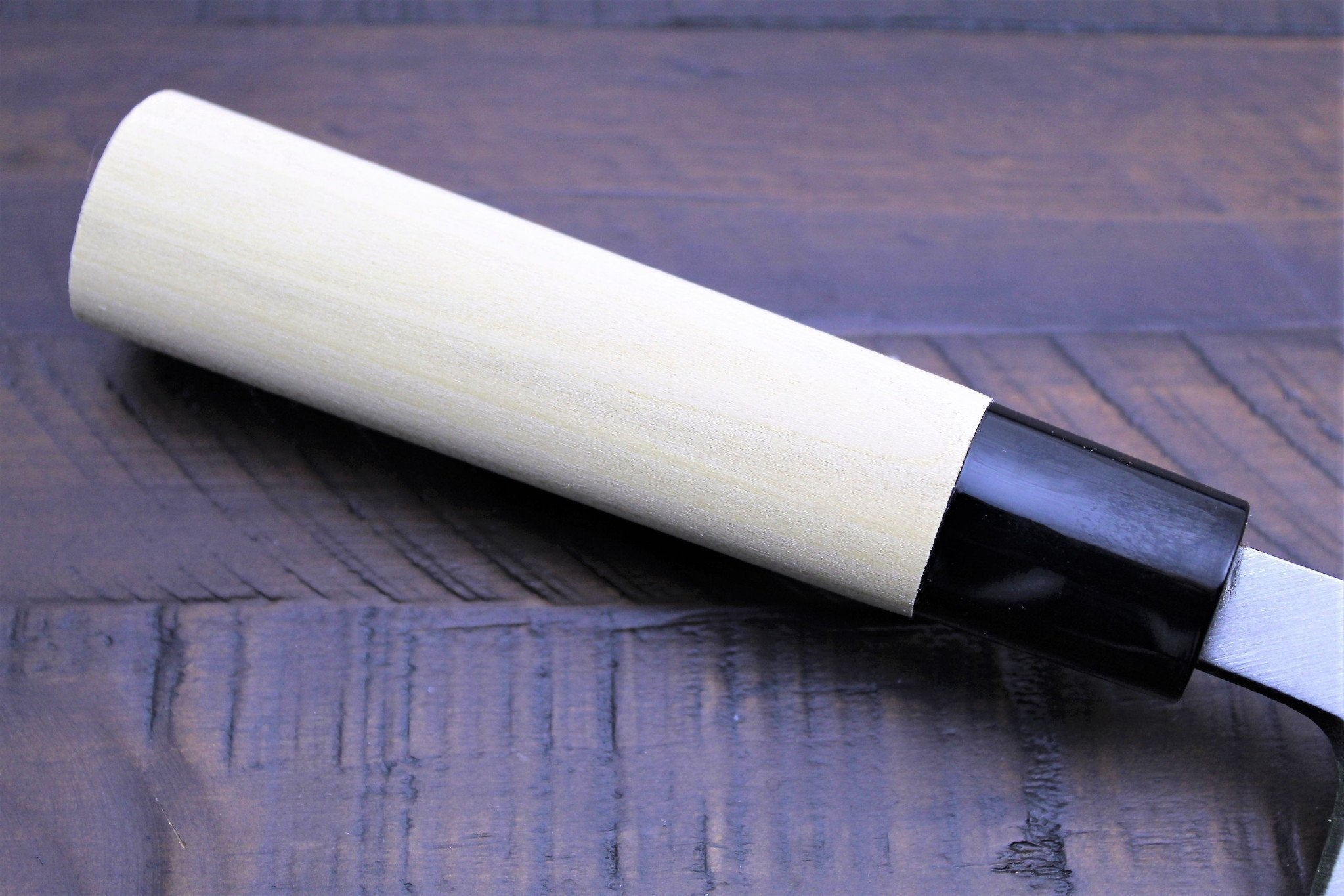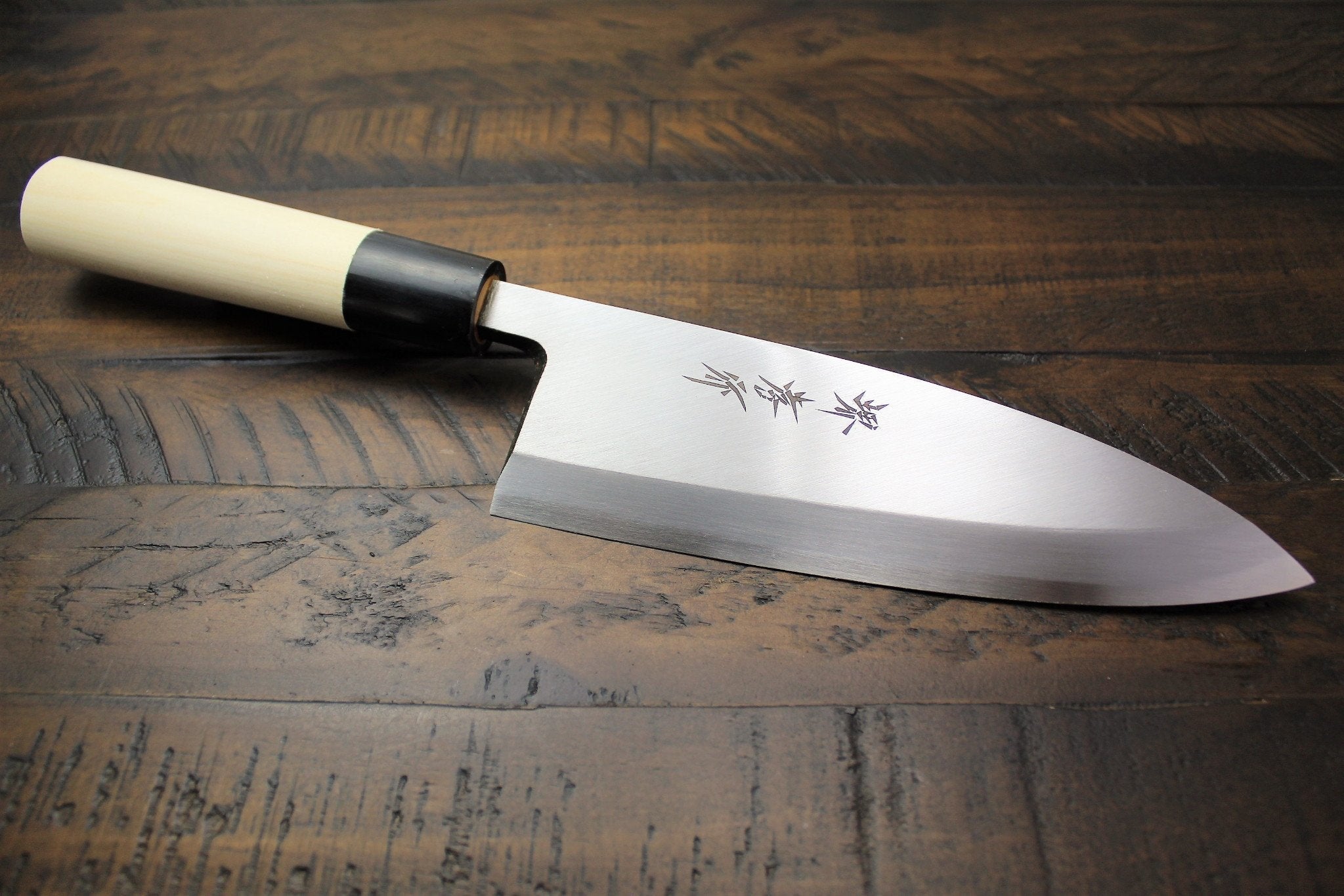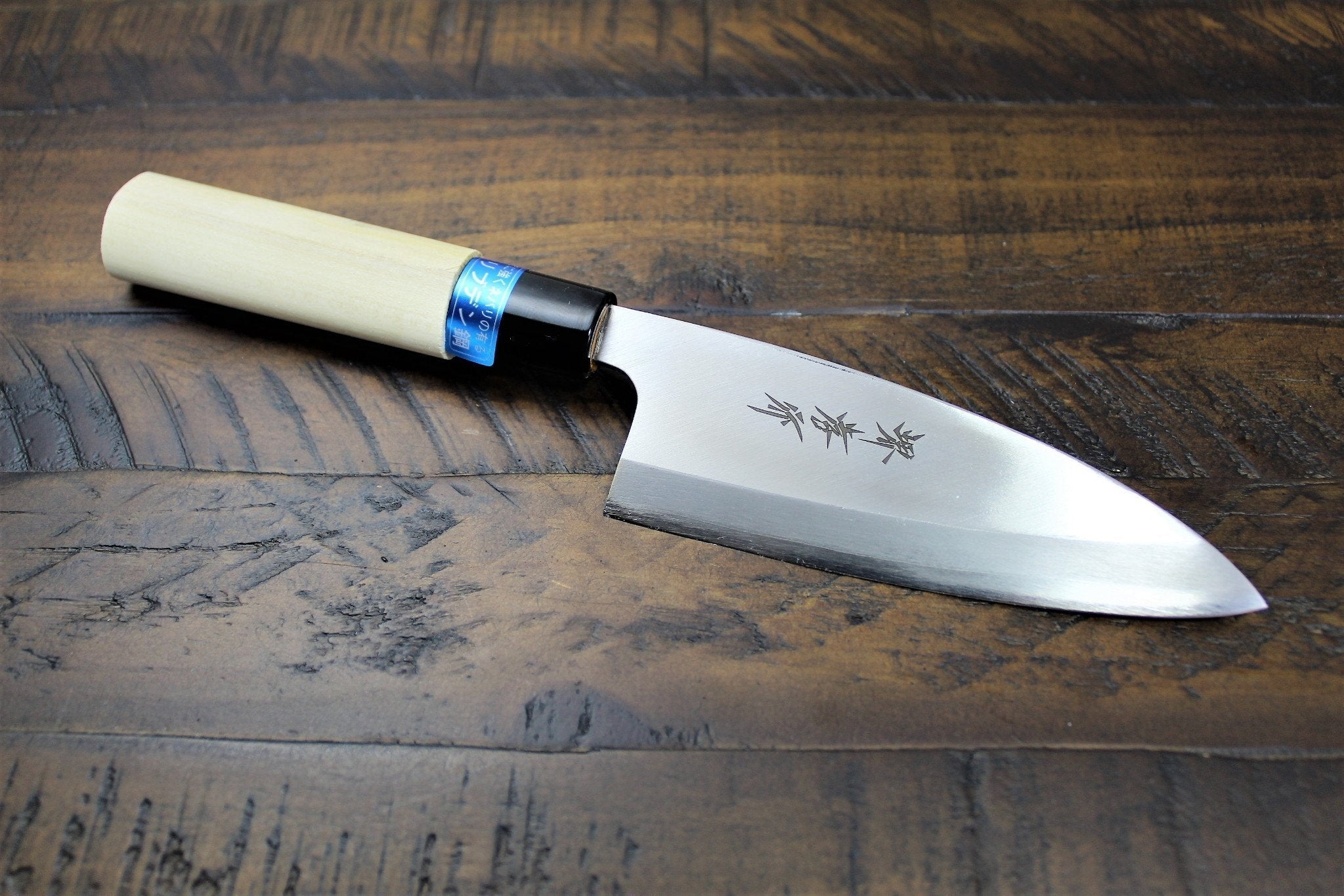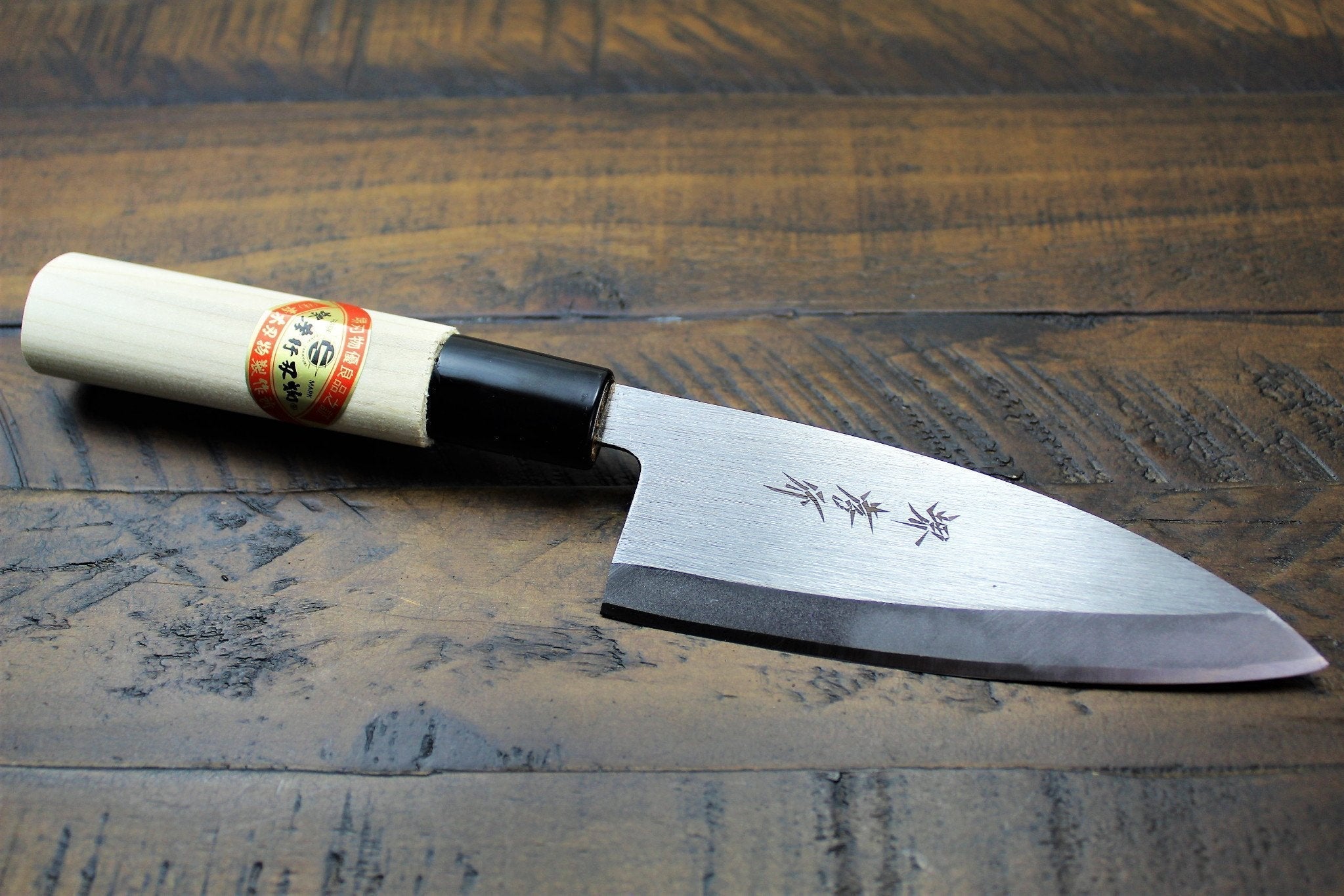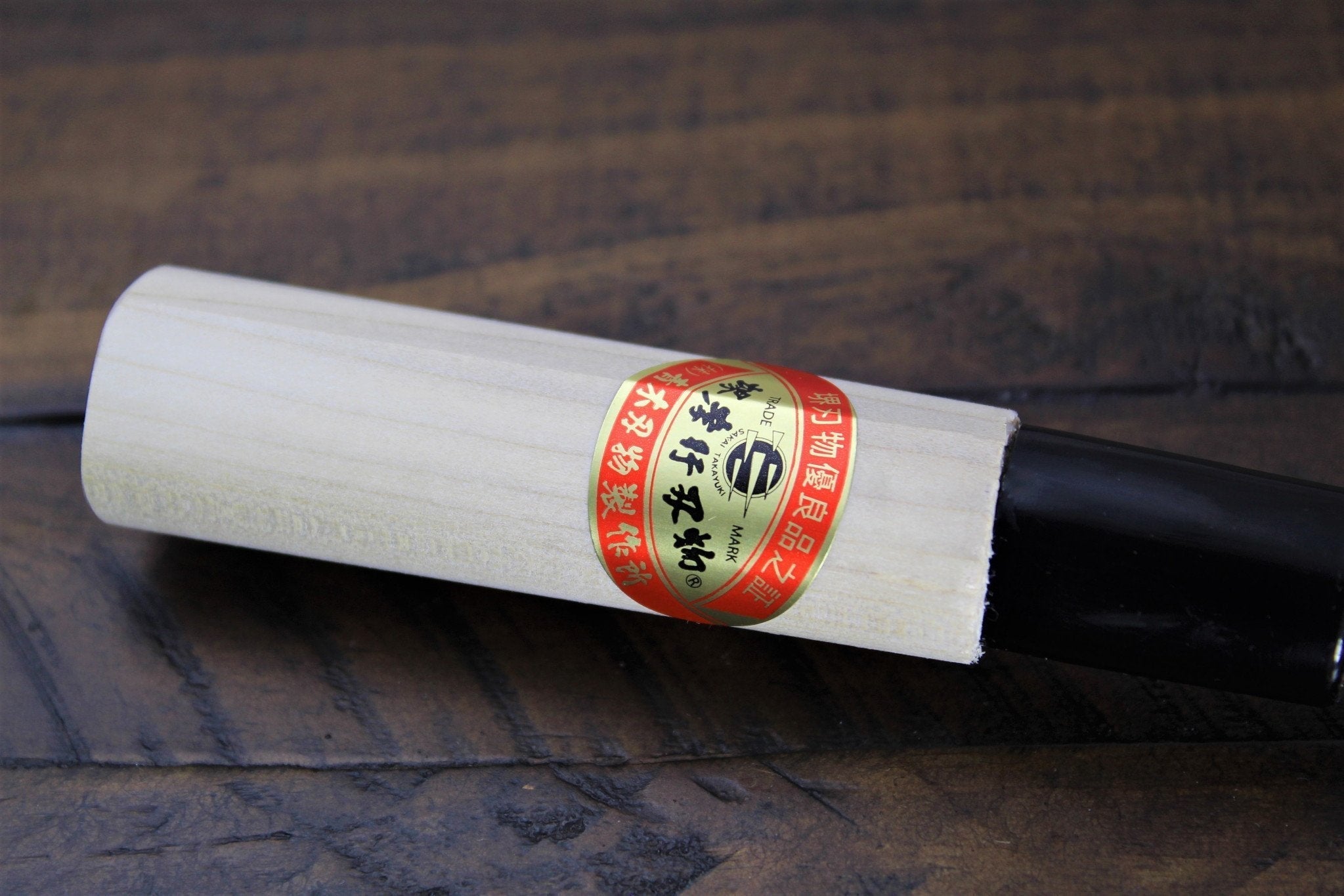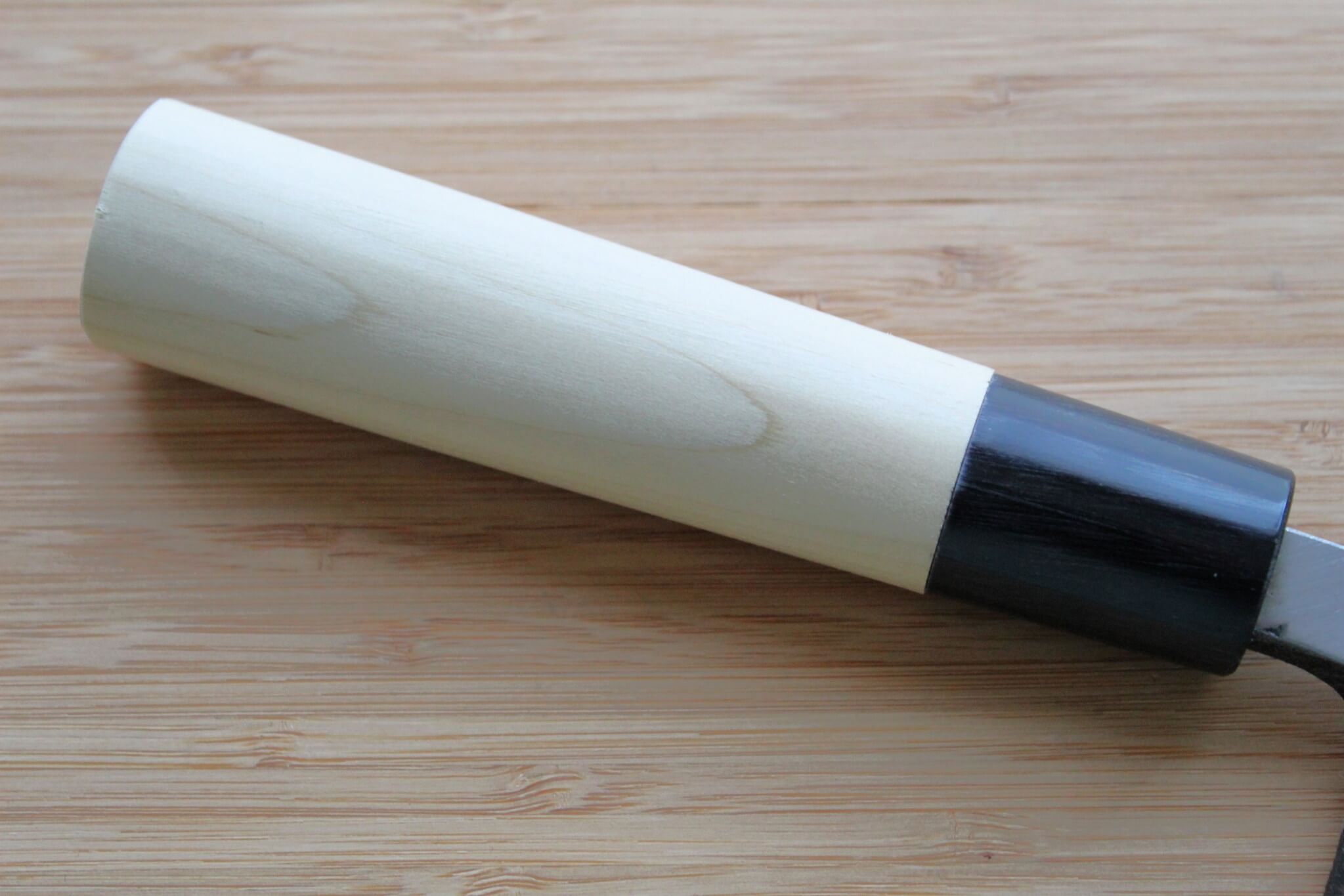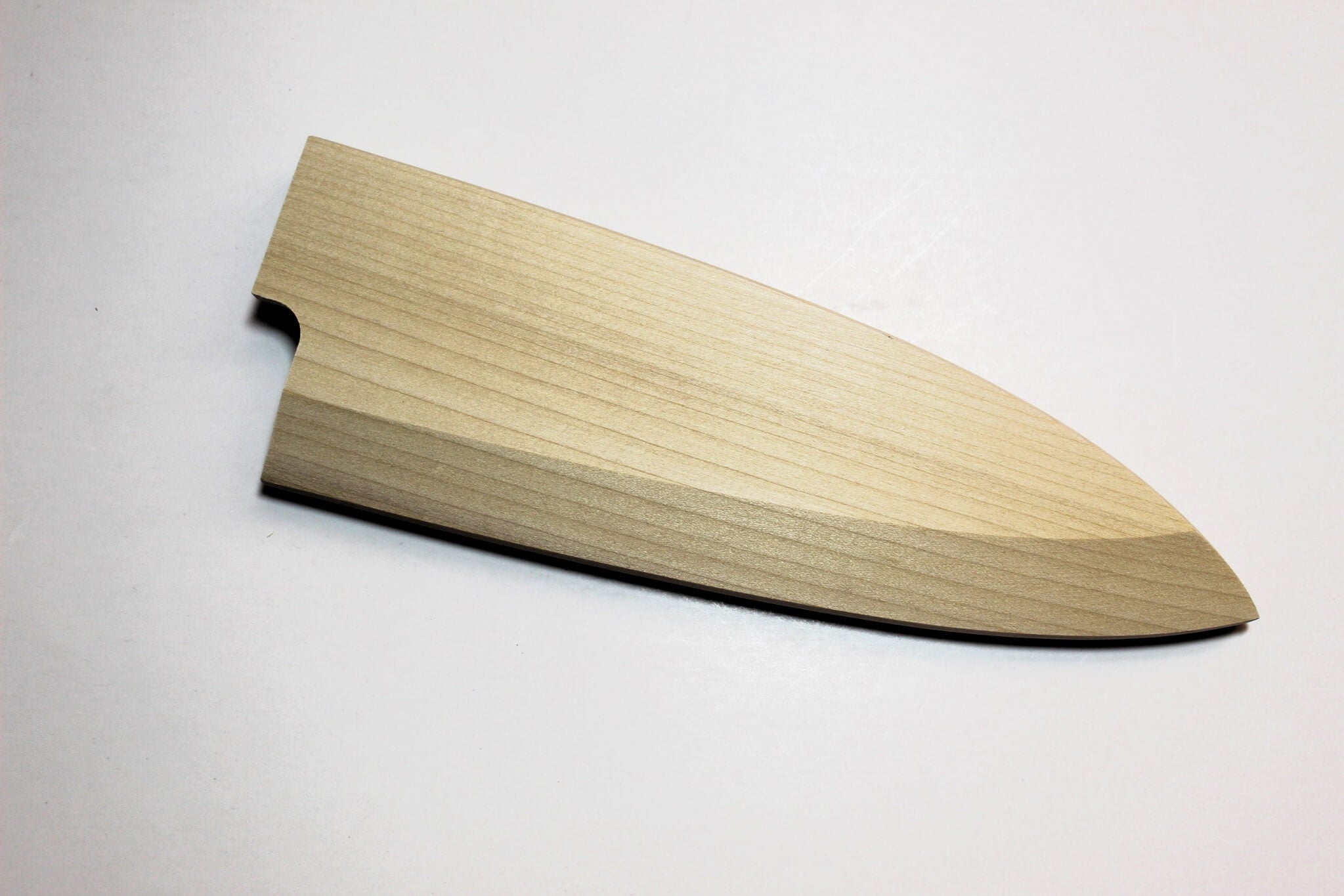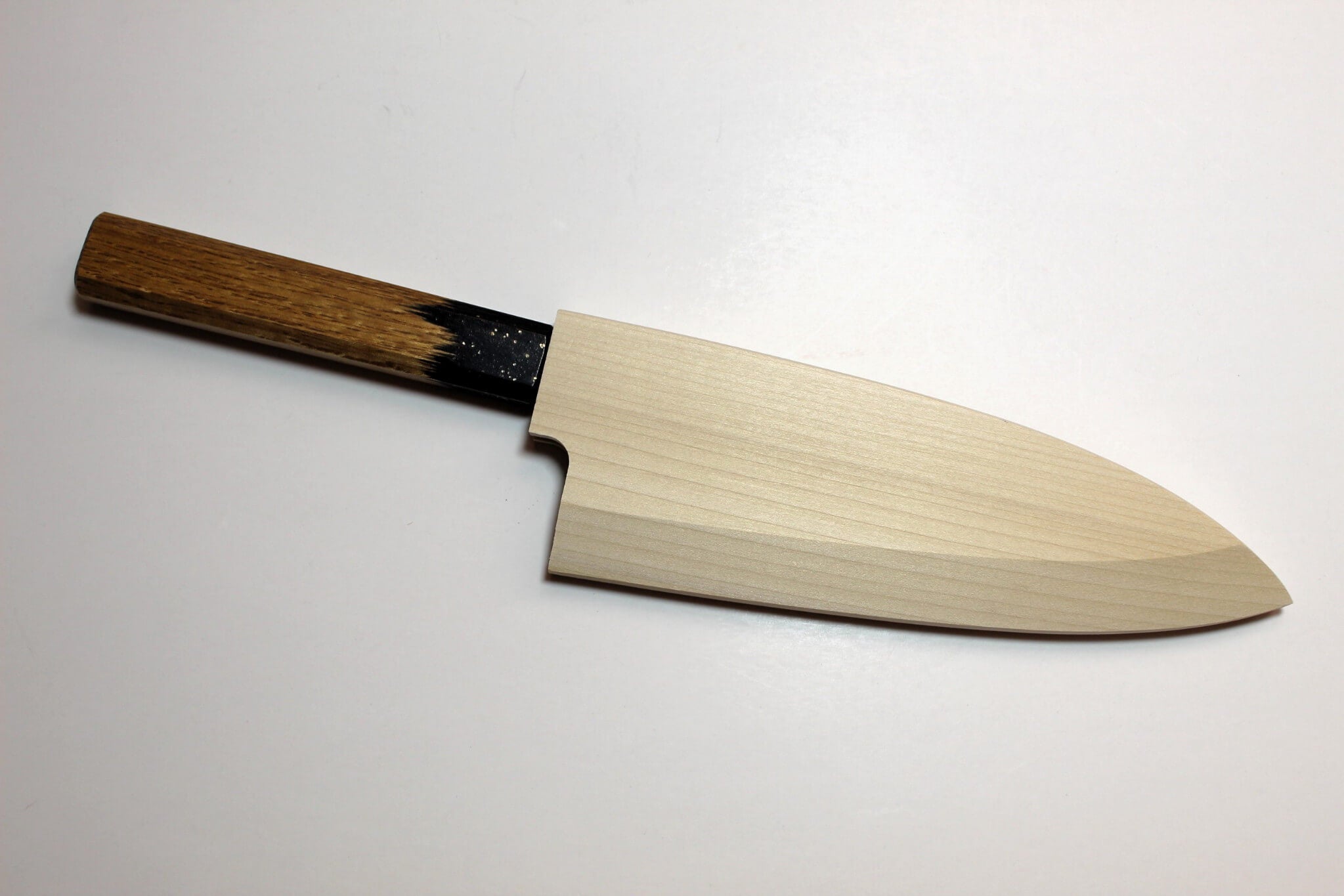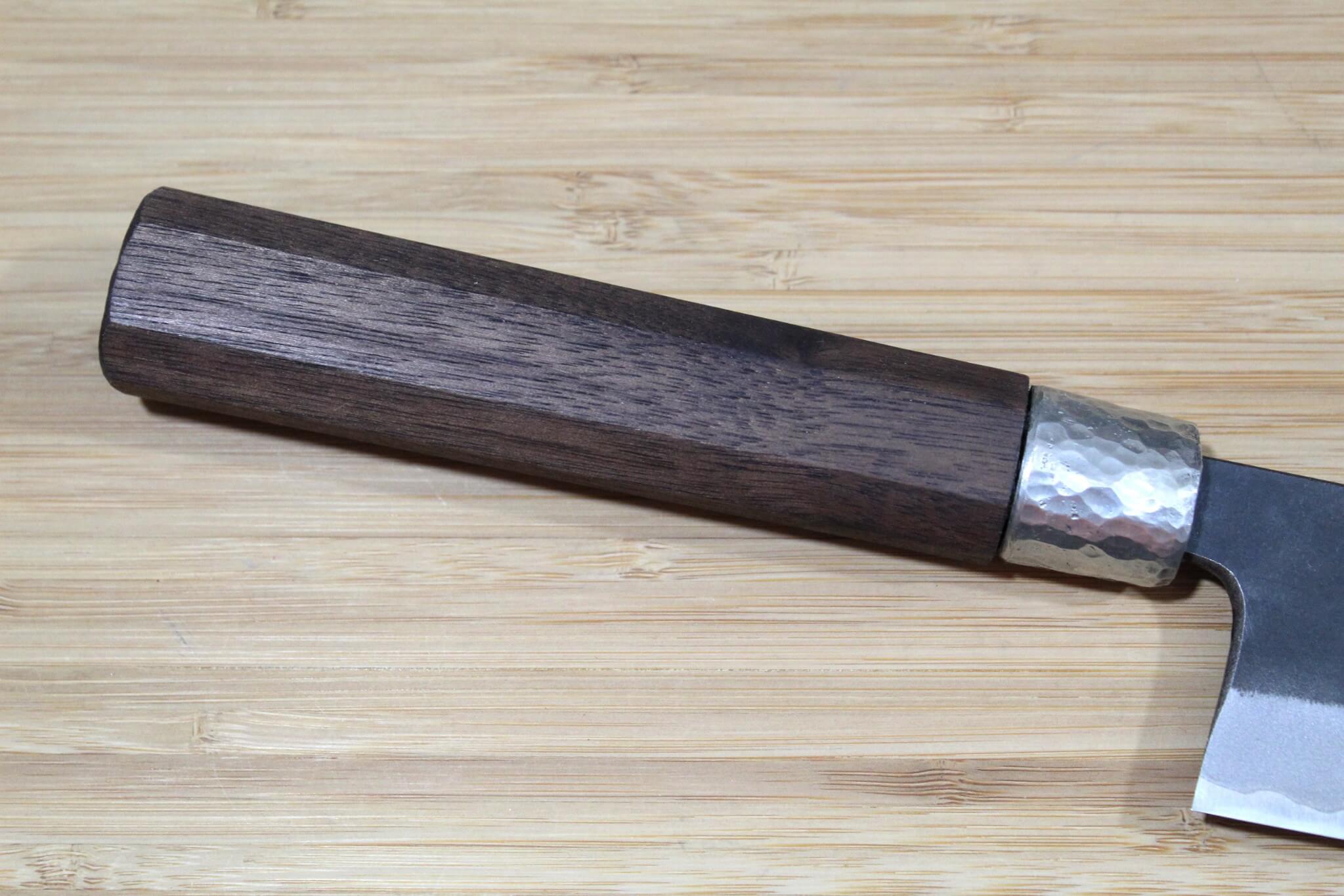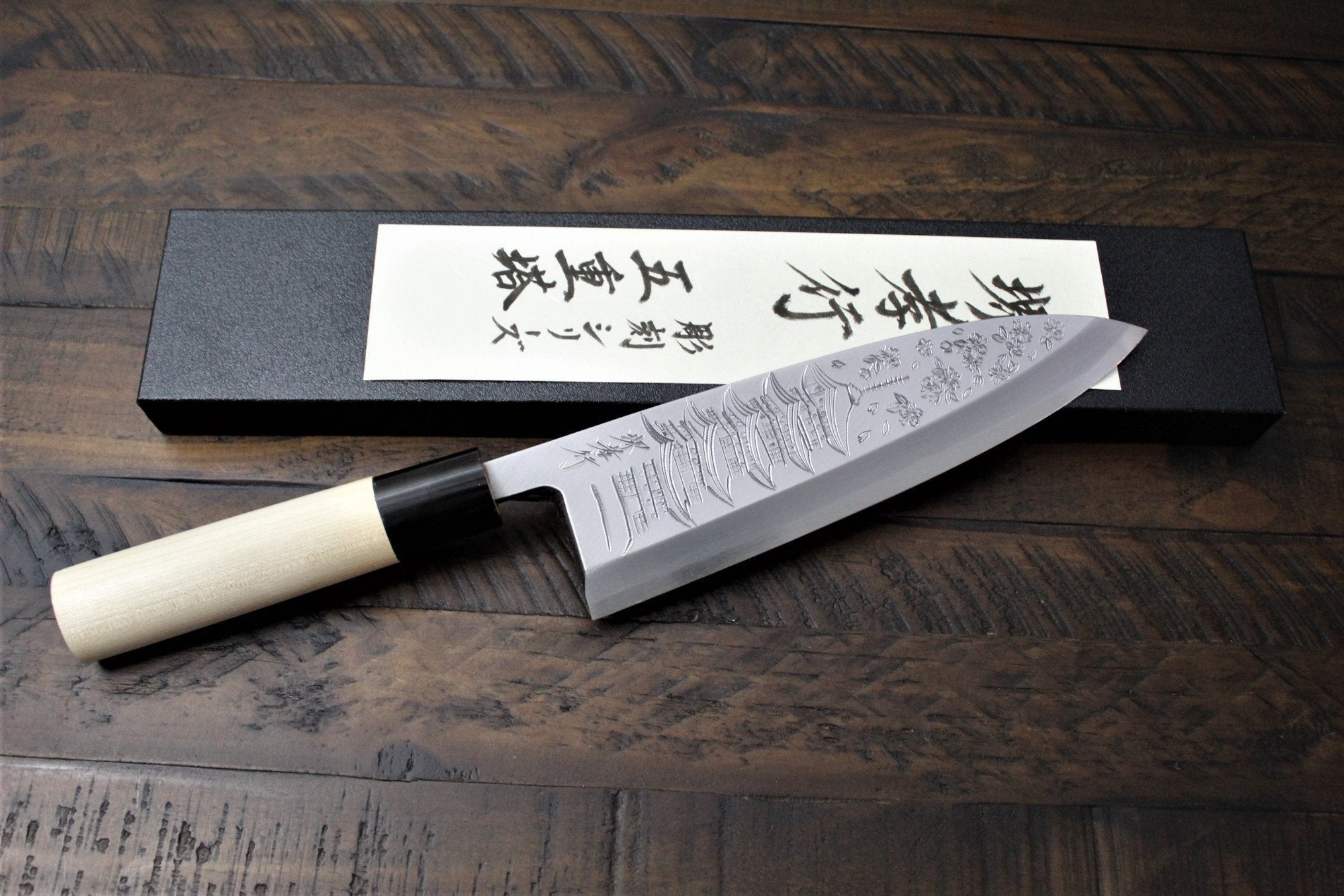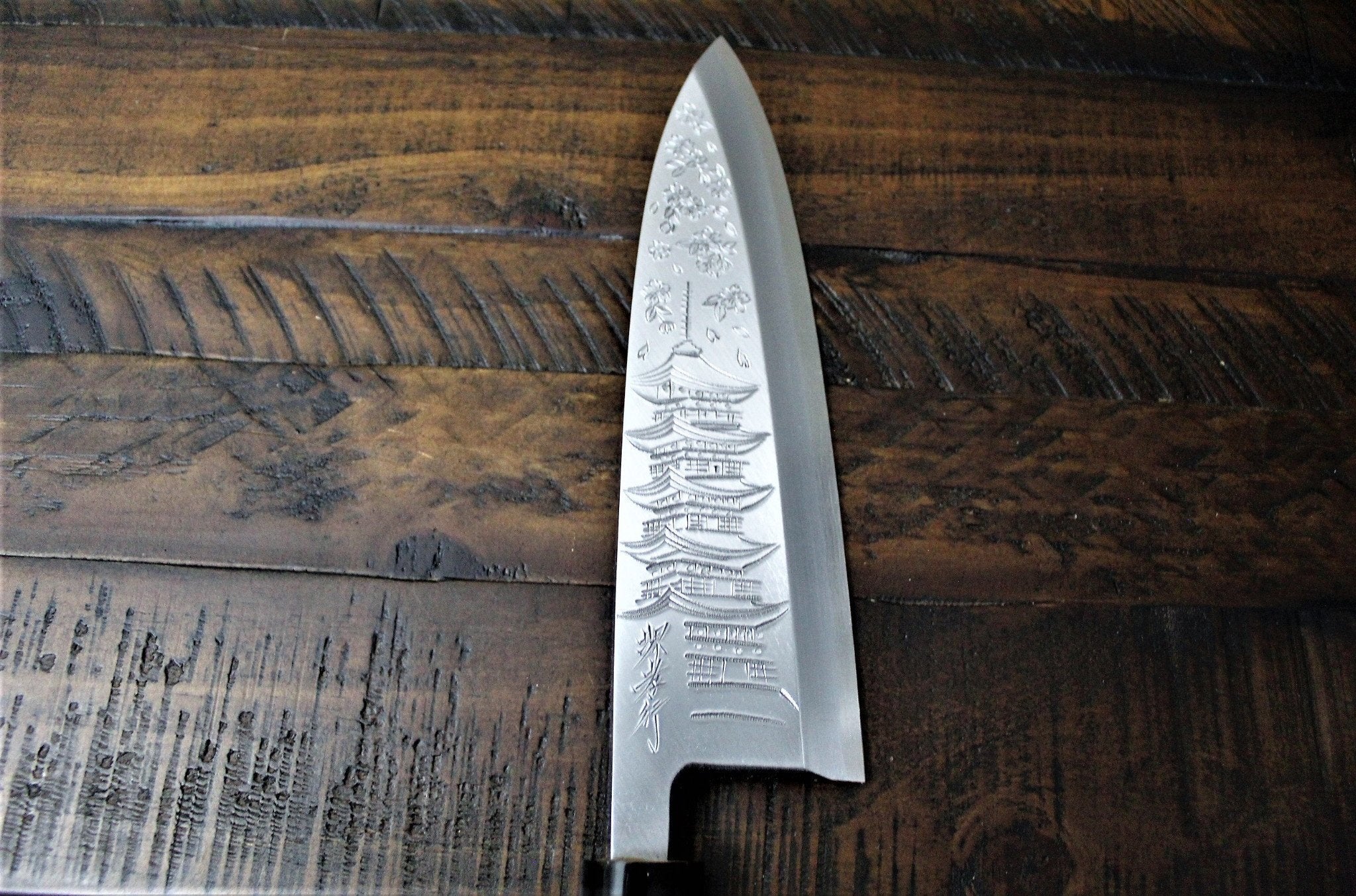Filters
History of the Deba Knife
The Deba, also called the Hon-deba (“true Deba”), means pointed carving knife. It originally appeared during the Edo period in Sakai, Osaka, and has since become an integral part of Japanese kitchens. In Japanese tradition, it’s nearly inconceivable to filet fish without using a Deba.
As with most traditional Japanese knives, the Deba has a single-beveled blade and a length of anywhere between 150-330mm. The length of your Deba should match the size of the fish you want to prepare. Most users prefer a 180mm long Deba knife. These knives are made of high-quality materials including molybdenum stainless steel and Shironiko or White Steel #2
Shop Handcrafted Japanese Kitchen Knives at Hasu-Seizo
The Deba is an excellent example of traditional Japanese craftsmanship. Everything from its thick spine to its sturdy build and highly-honed edge has been designed for a specific style of chopping. In fact, its tip is so sensitive that you can even feel when the blade touches fish bones, allowing you to carve a perfect bone-free filet.
For a more slender knife to help with butchery check out the great selection of Japanese boning knives. Find an extensive collection of Japanese butcher and kitchen knives at Hasu-Seizo, including Gyuto, Santoku, Petty, Yanagiba, and more. Shop from a range of materials, including high-carbon, stainless steel, and Blue Steel #2 among others. Each blade has been handcrafted by traditional artisans in Japan. Take your cooking skills up a notch with Hasu-Seizo.
History of the Deba Knife
The Deba, also called the Hon-deba (“true Deba”), means pointed carving knife. It originally appeared during the Edo period in Sakai, Osaka, and has since become an integral part of Japanese kitchens. In Japanese tradition, it’s nearly inconceivable to filet fish without using a Deba.
As with most traditional Japanese knives, the Deba has a single-beveled blade and a length of anywhere between 150-330mm. The length of your Deba should match the size of the fish you want to prepare. Most users prefer a 180mm long Deba knife. These knives are made of high-quality materials including molybdenum stainless steel and Shironiko or White Steel #2
Shop Handcrafted Japanese Kitchen Knives at Hasu-Seizo
The Deba is an excellent example of traditional Japanese craftsmanship. Everything. . . Show More >


